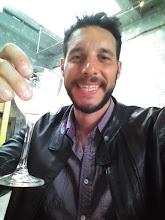Clayton Street is darker. Only a few porch lights remain lit here. This street is not traveled frequently enough to warrant the rows of streetlamps illuminating other, more favored arteries. At the end of the block is the house he wants. It’s lower than the older houses surrounding it. It is only one storey tall, and that’s mostly hidden by a wild tangle of bushes wrapping around its exterior. Moonlight hits the chaos of leaves and branches, causing them to turn a ghostly shade of silver.
There’s no reason the house shouldn’t appear as still as does. Despite its single-storey stature, it shares the same, defining characteristic with the other houses on the block: sunk as they are in a tomb-like repose, their occupants lost in a slumber just as deep.
The pickup rattles into the driveway. There’s no car. What was it that Mr. Warshansky drove? The driver remembers a long black sedan, but can’t recall the make. He gets out and inspect the garage door: firmly locked in place. Drawn shades block the view in through each window. The front door is similarly bolted. It’s late enough, but the driver has to knock. The Warshansky’s, if they answer, will undoubtedly be annoyed, but at least they’ll be warned. The driver wonders whether he’ll be able to get the point across any more forcibly now that he’s standing there in the flesh.
Now matter how hard he pounds, the thuds seem to get lost in the heavy oak of the door. He can imagine the silence of the interior: swathed in soft carpet, and furniture of tastefully patterned cloth. The quiet is too much. Nobody is home. That could be a good sign. The driver allows himself a sigh of relief. With it returns his exhaustion –it’s easier to stifle it when one is behind a wheel- and his vision washes in a hazy silver, as if the moonlight has pierced his eyes and burnt his retinas. He wants to collapse, is about to, but has to catch himself at what he sees when he turns around.
Standing at the edge of the lawn is familiar silhouette. The driver recognizes the medium height figure with a top of tousled hair, even in his tired delirium. The moonlight, however diffuse, catches a metallic gleam from something gripped in one hand.
“This it?” The driver has heard that low growl many times. It’s his own, but doesn’t recall saying anything.

